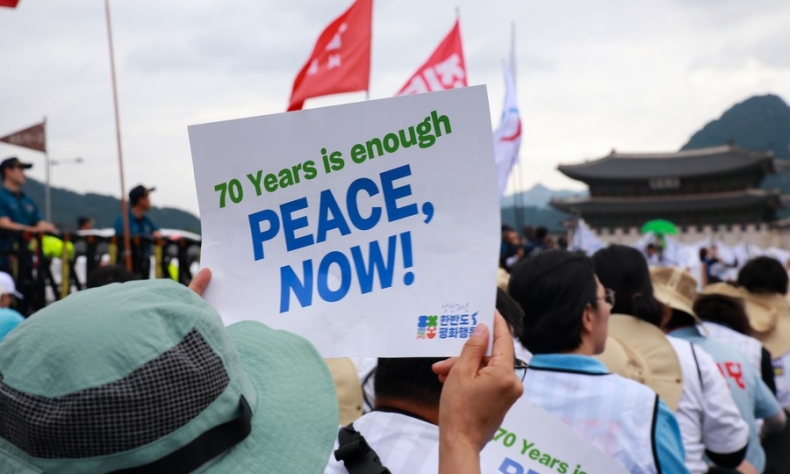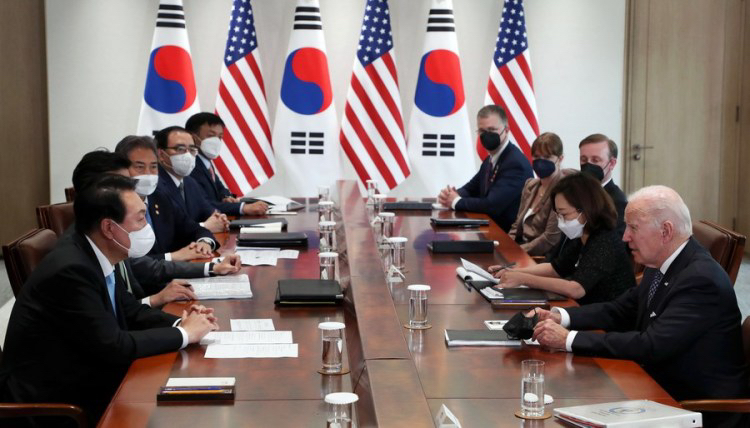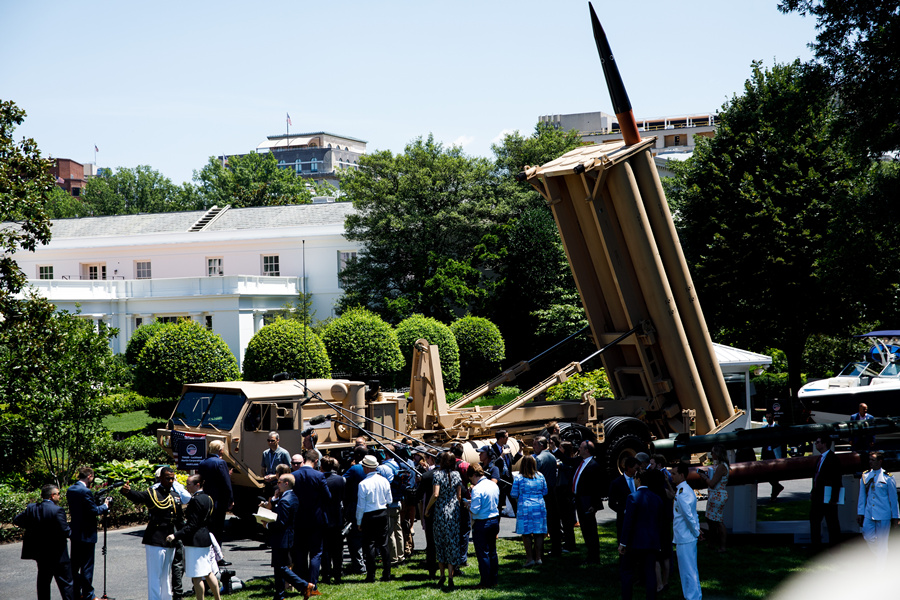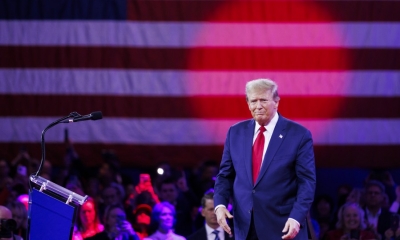Two Koreas, One Peninsula

Washington must bring itself to undertake a form of constructive Great Power diplomacy with China and Russia to make progress on resolving Korean Peninsular and regional issues.
Washington’s aggressive global belligerence is unsettling to many in the Asia-Pacific region. For the first time since the 1980s, the United States last month deployed a nuclear-armed ballistic missile submarine (SSBN) to South Korea. The United States and its allies in the region held talks on how to coordinate in the event of a nuclear war with North Korea.
Rather than seeking to reduce tensions in the Korean Peninsula, the Biden administration doubles down on the militarization of the Asia-Pacific. While the U.S. “pivot to Asia” policy began with the Obama administration, the Biden administration policy significantly raises tensions in the region.
Washington continues to promote containment of China and to provide China’s Taiwan Island with military assistance and official support.
Increasingly, Washington sets the stage for war through security cooperation with Australia, the Philippines, and South Korea.
The U.S. dominated NATO war machine expands eastward to confront Russia just as Nazi Germany did with its demand for “living space” in the east. The U.S. in the Asia-Pacific is busy creating a new “Co-prosperity Sphere” for the region with Japan playing the central role.
The Korean Peninsula can well become a flashpoint triggering war. Instead of deescalating tensions, Washington is raising tensions.
Koreas and the Olympic spirit
The former moderate government in South Korea attempted a “Sunshine” policy with respect to North Korea. There was a distinct possibility for constructive diplomacy that could eventually have brought about a peace settlement.
Developments surrounding the Korean situation unfolded rapidly and unexpectedly after the 2018 Winter Olympics. There was an apparent thaw and the possibility for peace diplomacy. Hawks in Washington, however, blocked President Donald Trump’s apparent personal willingness to work toward a peaceful settlement.
But in May 2022 a new government took power in Seoul and sought closer alignment with the U.S. and Biden hawkish North Korea policy. This government will be in power until 2027.

Comprehensive peace settlement necessary
While the present diplomatic direction is heading away from a peace settlement and a stabilization of the peninsula, a constructive vision nevertheless must be upheld. A comprehensive settlement would include not only the nuclear issue but also peace treaties and measures for economic development. In short, a constructive and sustainable formula for “Two Koreas, One Peninsula” is required.
The world is entering a period of dramatic change and has entered an evolving multipolar international situation. Power is shifting and the constellation of forces internationally is realigning. The next decade or two will be a challenge to navigate through undoubtedly perilous waters.
The key to the resolution of outstanding Korean issues is a mutual commitment by the leaders of the two Koreas to respect each others’ core interests and to work together on a sincere basis to promote peace and development.
Unification need not be attempted any time soon but it can evolve organically as a bi-lateral process of reconciliation, confidence building, and cooperation develops.
Meanwhile, there must be a step-by-step process toward a comprehensive settlement to all outstanding issues. Focus on the technicalities of denuclearization is appropriate for that specific task but the wider context and bigger picture must be taken into account also. Peace treaties must be signed, new arrangements worked out and economic and infrastructure development projects created.
The regional context must be transformed from that of a zone of instability, a potential “shatterbelt”, into a zone of peace and development.
A neutralized Korean Peninsula guaranteed by regional major power stakeholders and the UN is a worthy goal. It is in the interest of China, Russia, and Japan to support such a process.
U.S. belligerent bullying a road block
In Washington, Cold War circles, Neoconservatives, and the military-industrial complex resist a pragmatic solution. Tensions in the region offer opportunities for multi-billion-dollar weapons sales. Troops can be kept in South Korea rather than being brought back to the U.S.. THAAD systems can remain to intrusively monitor deep into Chinese and Russian territory. Unnecessary and provocative U.S. naval and air activity can be maintained.
The U.S. has had a presence in the Asia Pacific region for nearly two centuries. In the late 19th century, China took the initiative to facilitate the establishment of U.S. relations with Korea. Has Washington lost the capacity for the creative diplomacy shown four decades ago in the U.S. opening to China or in the détente with Russia? In the interest of peace, can the U.S. find a way work with China and Russia on Northeast Asian issues?

The Trump administration was full of sound and fury that signified little. Relations with China and Russia were set back considerably, relations with allies were unsettled, and relations with North Korea were made fruitless. So far, the Biden administration has not improved the situation but, unfortunately, has aggravated the situation.
Absent from all discussion of the North Korean issue in Washington has been a vision of Northeast Asia and regional integration that includes North Korea. Former U.S. administrations avoided the regional and major power context and the corporate media in the U.S. continues to promote hysteria about Pyongyang and has ignored the regional context.
The Trump administration killed any progress by insisting on maximalist demands. Phased “step by step” diplomacy was rejected and thus substantive engagement was foreclosed. So far, Biden has shown no interest in constructive diplomacy and continues a hostile posture toward North Korea. It is also expected that conservative forces in Japan and South Korea will resist engagement with North Korea.
What must be done?
A responsible American president would be sufficiently flexible and farsighted to adopt a realistic approach to diplomacy with North Korea. For example, Washington must view the North Korea question in an overall context. Such a context is one of Northeast Asia as a region. This brings in stakeholders such as China, Russia, and Japan and enhances the prospect of multilateral diplomacy.
Critics of U.S. policy in the Asia-Pacific say it is reckless and dangerous. A sophisticated policy, they say, would work to reduce tensions by facilitating peaceful reunification of North and South Korea not to mention facilitating the peaceful reunification of Chinese mainland and Taiwan Island.
China and Russia must play a significant role in advancing a diplomatic peace process for the Korean Peninsula. Japan must adopt a constructive attitude. Washington must adopt a realistic and pragmatic policy. Together, the major powers can work in concert to ensure peace and development in northeast Asia.
War is no sane option. Washington must bring itself to undertake a form of constructive Great Power diplomacy with China and Russia to make progress on resolving Korean Peninsular and regional issues.
The article reflects the author’s opinions, and not necessarily the views of China Focus.
 Facebook
Facebook
 Twitter
Twitter
 Linkedin
Linkedin
 Google +
Google +







